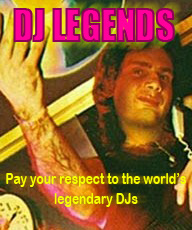New life for a totally old skool pos.
New life for a totally old skool pos. Posted on: 09.03.2010 by Seth Knippling About 15 years ago one of my music instructors let me have this old 2 octave midi keyboard from Novation. It is simillar to an Oxygen8 you are all familliar with, but with the only controls being 25 keys, octave transpose < and >, and pitch and mod.(image from the site below. I didn't believe to take a picture before I started this project.) After seeing enough about this midi fighter controller business, and having had a long strong desire to take everything I own apart and haxxing it, I've decided to embark upon demolishing my old Novation Midicon, and converting it into something more sassy. This junk is so old, that the only reference to it on the internet is this: http://beta.vjcentral.com/hardware/novation-midicon I've been meaning to do something like rearrange the keys Moldover style or some such, but never got around to it. This recent fascination on DJTT with the arcade buttons and the Midi Fighter and everything was a call to action. I should have started with pictures from the beginning but didn't believe about it until I was already knee deep. Here is the current status of the project: Overview of guts: Current available I/O/power interface: Strip connected via ribbon to core circuit, 25 keys used to use rubber contacts for sensing button presses. The bottom row is note on/off, the top row has to do with sensing velocity. After studying it a bit in Midi-OX, triggering the contacts differently, I couldn't figure it out. How cool would it be if it provided an additional 25 CCs? haha Also included are Octave +/- buttons... Which in a sense will be like different "banks" once I have it rigged -- who woulda thought this thing could be so awesome? Also, the two potentiometers from Pitch Bend and Mod. My current problem is the circuitry only registers the potentiometers from about 33% to 66%. I've tried testing with different pots, including faders (which is what I initially wanted to use) but the case is the same. If you know how to easily modify this, if it's just adding/removing a resistor somewhere, let me know. I don't believe it will be that easy though. I drilled 3/64" holes into the button contact conductive material. I will be soldering wires into them in order to make leads for my potential buttons. At first I wasn't sure if this would work, but after a successful test using a wired switch from an old dsl modem I had taken apart to repair my x-session pro, I was thrilled. I am considering using a wiring harness so I can also easily modify the button configuration/type in the future by simply "unplugging" them without damaging the circuit board by desoldering/resoldering. Another feature I am considering is taking my USB/Midi interface and directly implementing it into my custom board. I haven't decided yet if I want to waste my Edirol on this just to remove the need for one wire. The other thought was to embed the Edirol into the casing, but not cannibalize it, allowing future re-use of it. Then again, the dumb thing was only like 25 bucks. I am currently waiting for a few things to arrive in the mail this week, such as buttons etc. The biggest / most intimidating problem I'm having is the casing for the project. Tips? I started this project yesterday, and will repost when I have a more updated structure. Comments and suggestions are definitely welcome. Thanks guys, T | |
| Seth Knippling 09.03.2010 | About 15 years ago one of my music instructors let me have this old 2 octave midi keyboard from Novation. It is simillar to an Oxygen8 you are all familliar with, but with the only controls being 25 keys, octave transpose < and >, and pitch and mod. (image from the site below. I didn't believe to take a picture before I started this project.) After seeing enough about this midi fighter controller business, and having had a long strong desire to take everything I own apart and haxxing it, I've decided to embark upon demolishing my old Novation Midicon, and converting it into something more sassy. This junk is so old, that the only reference to it on the internet is this: http://beta.vjcentral.com/hardware/novation-midicon I've been meaning to do something like rearrange the keys Moldover style or some such, but never got around to it. This recent fascination on DJTT with the arcade buttons and the Midi Fighter and everything was a call to action. I should have started with pictures from the beginning but didn't believe about it until I was already knee deep. Here is the current status of the project: Overview of guts: Current available I/O/power interface: Strip connected via ribbon to core circuit, 25 keys used to use rubber contacts for sensing button presses. The bottom row is note on/off, the top row has to do with sensing velocity. After studying it a bit in Midi-OX, triggering the contacts differently, I couldn't figure it out. How cool would it be if it provided an additional 25 CCs? haha Also included are Octave +/- buttons... Which in a sense will be like different "banks" once I have it rigged -- who woulda thought this thing could be so awesome? Also, the two potentiometers from Pitch Bend and Mod. My current problem is the circuitry only registers the potentiometers from about 33% to 66%. I've tried testing with different pots, including faders (which is what I initially wanted to use) but the case is the same. If you know how to easily modify this, if it's just adding/removing a resistor somewhere, let me know. I don't believe it will be that easy though. I drilled 3/64" holes into the button contact conductive material. I will be soldering wires into them in order to make leads for my potential buttons. At first I wasn't sure if this would work, but after a successful test using a wired switch from an old dsl modem I had taken apart to repair my x-session pro, I was thrilled. I am considering using a wiring harness so I can also easily modify the button configuration/type in the future by simply "unplugging" them without damaging the circuit board by desoldering/resoldering. Another feature I am considering is taking my USB/Midi interface and directly implementing it into my custom board. I haven't decided yet if I want to waste my Edirol on this just to remove the need for one wire. The other thought was to embed the Edirol into the casing, but not cannibalize it, allowing future re-use of it. Then again, the dumb thing was only like 25 bucks. I am currently waiting for a few things to arrive in the mail this week, such as buttons etc. The biggest / most intimidating problem I'm having is the casing for the project. Tips? I started this project yesterday, and will repost when I have a more updated structure. Comments and suggestions are definitely welcome. Thanks guys, T |
| Rebbecca Fennell 11.03.2010 | ha oops didn't see that post. I'm in the same boat - I want to mod a keyboard but don't wanna leave out a feature that's there. I have a feeling that short of making a custom arcade button key bed that there is no useful way to utilize velocity. If you're really crafty you can manufactor your own custom keybed lol |
| Seth Knippling 11.03.2010 |
the best I could believe was that vel. was based on timing. The rubber pads for the note and vel buttons were offset in height,
Can't wait to get my buttons in the mail this week. I want to get this puppy functioning! |
| Rebbecca Fennell 11.03.2010 | From what I understand the reason there's 2 contacts for each key isn't "one is velocity and one is note on" I'm pretty sure they do both. The key strikes the contacts at an angle so one contact makes connection before the other, and the time between both contacts making connection is what's used to establish the velocity. I believe. That's what I took out of the explanation I got on how midi velocity works. |
| Seth Knippling 10.03.2010 | Hahah - That would be sick awesome. Unfortunately not If you look at the button strip, there are two rows of button pairs. The bottom row are note on/off, the top row are for velocity. After messing about with Midi-OX trying to figure out which buttons were what and how they worked, the best I could believe was that vel. was based on timing. The rubber pads for the note and vel buttons were offset in height, I would believe so they hit at slightly different times. If you pressed the two very quickly or seemingly at the same time, the vel would be registered high. If you don't press it at all, or press it late, the vel is low, or 0. If you press a vel button, then a note on, you can let go of the note button and note off won't be sent until you let go of the velocity button. So with that said, if anyone has a good idea about what to do with those buttons, I'd be thrilled. As it goes, I can't believe of too much. |
| Chara Ravine 10.03.2010 | What's the deal with velocity sensors? Are those analog? Maybe you could have 25 more pots with that board. I'm not shure though. |
| Seth Knippling 09.03.2010 |
This would be PERFECT for what I want to do. A 10" controller with either 16 or 34 arcade buttons and a mod wheel + pitch bend... Better keep an eye out on ebay for a cheap one of these...
I plan on doing a layout about 7" across, and 15" deep to fit the components. Bigger than I'd like, but hard to go wrong for close to free. Does anyone have any tips for the potentiometers for the mod and pitch wheel? The situation is this: Both pots do not register CCs until around 33% voltage. And send full (127) at 66%. This makes sense for the use of mod wheels, where you do not turn them a full 360 (or near), but I wanted to replace the pots with faders. Do you know if it is something easily regulated by adding/removing resistors? Or is it something hardcoded into the midi proc. chip? If I can't make it work, having wheels embedded into the controller isn't such a bad thing I suppose... Thanks, Tim |
| Lorrine Eckstein 09.03.2010 | Keeping a close eye on this! |
| Brunilda Kora 09.03.2010 | This would be PERFECT for what I want to do. A 10" controller with either 16 or 34 arcade buttons and a mod wheel + pitch bend... Better keep an eye out on ebay for a cheap one of these... |
| Merlyn Komula 09.03.2010 | Nice work! def looking forward for the end result! |
<< Back to Reviews of DJ equipment Reply



